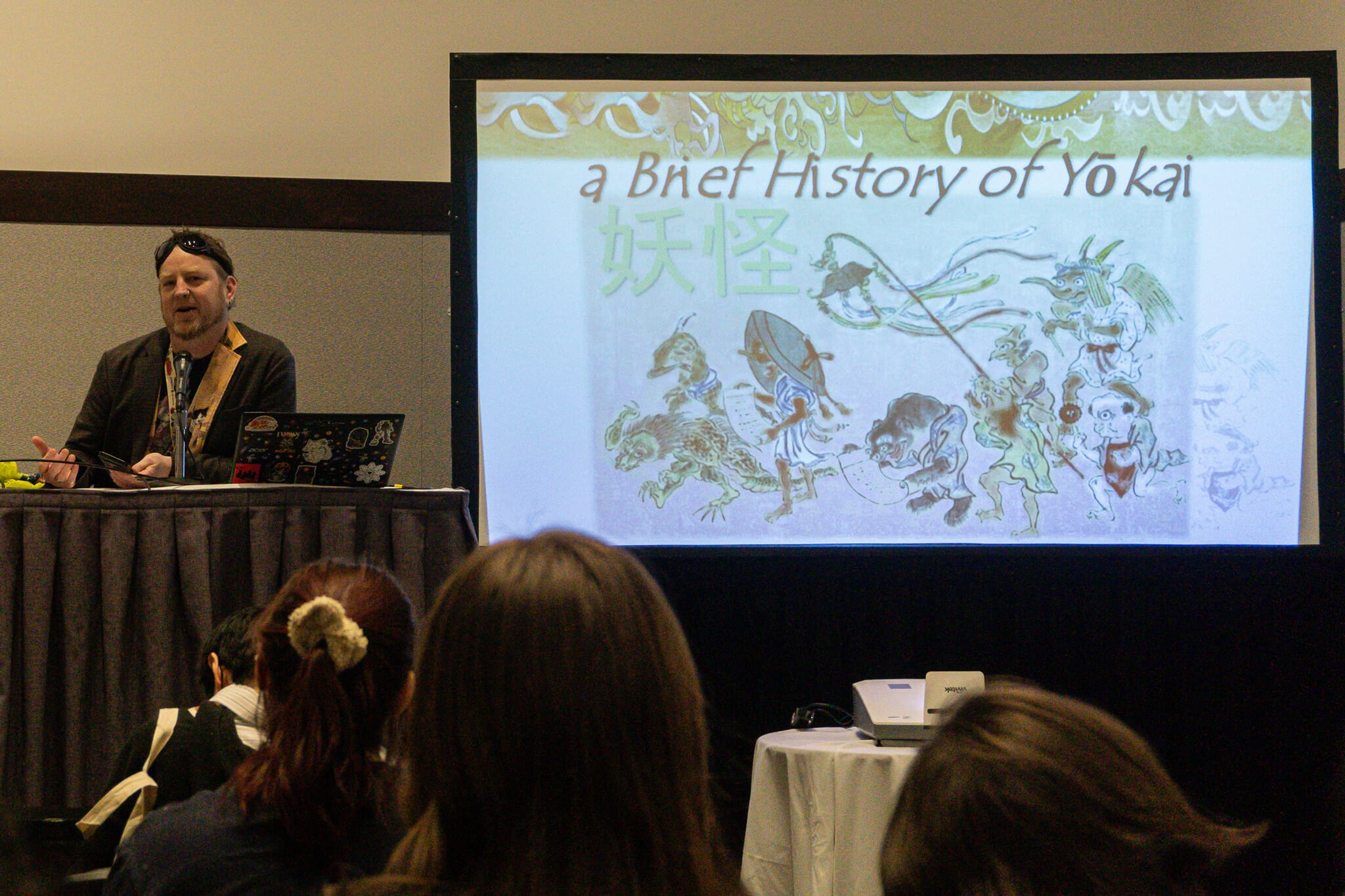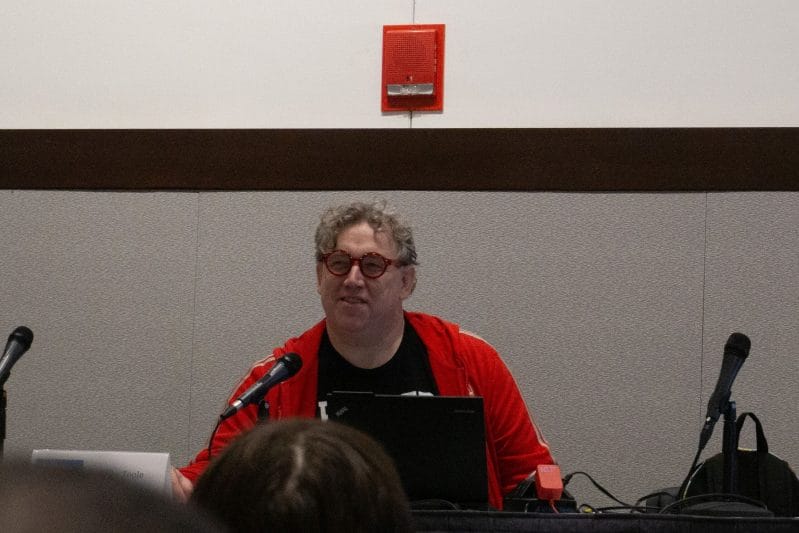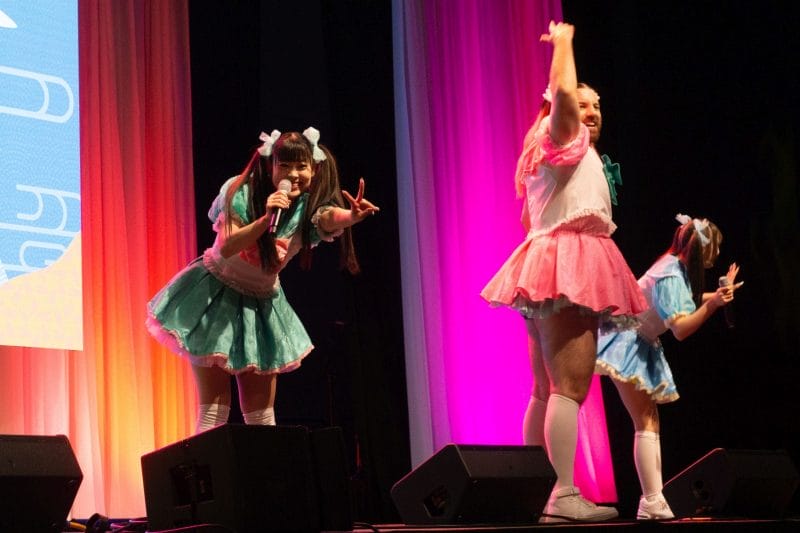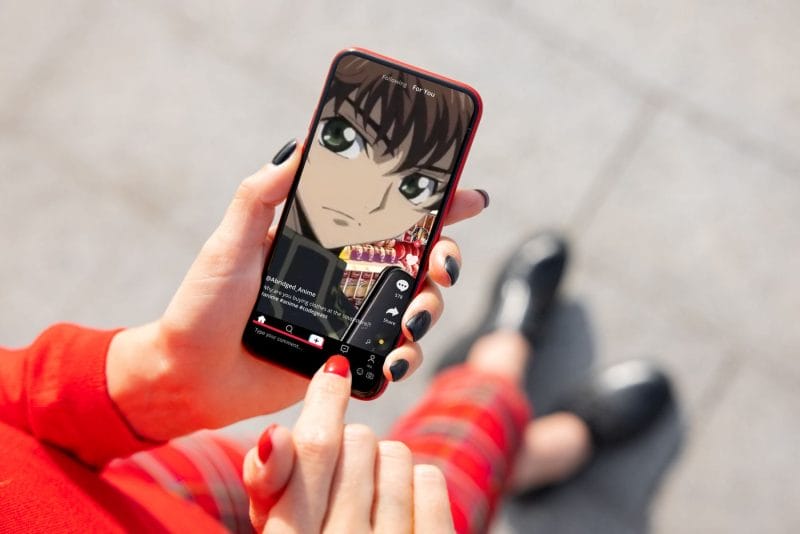Editor: Samantha Ferreira
- Date: 4/8/2023
- Host: Zack Davisson
When discussing the topic of Japanese entertainment, it’s difficult to avoid mentioning yokai. From the turtle-like kappa to the multi-tailed kitsune, these supernatural beings have intertwined themselves into the country’s cultural fabric. Zack Davisson is a translator who literally wrote the books on all things yokai. He is the official translator for Gegege no Kitaro creator Shigeru Mizuki’s work, and has delivered lectures on the topic across the country.
So, to say he was in his element for this panel is a bit of an understatement.
Anime Boston attendees were eager to catch Davisson’s show, to the point that the event was standing room only by 1:50PM. Five minutes later, the staff began turning the lengthy line of waiting fans away. Davisson, meanwhile, sat at the front of the room, clad in blue jeans and a blazer, his signature goggles resting at his hairline. At 2:00, he greeted the panel, introducing himself as a yokai hakase (“妖怪博士”), a professor of all things of yokai.
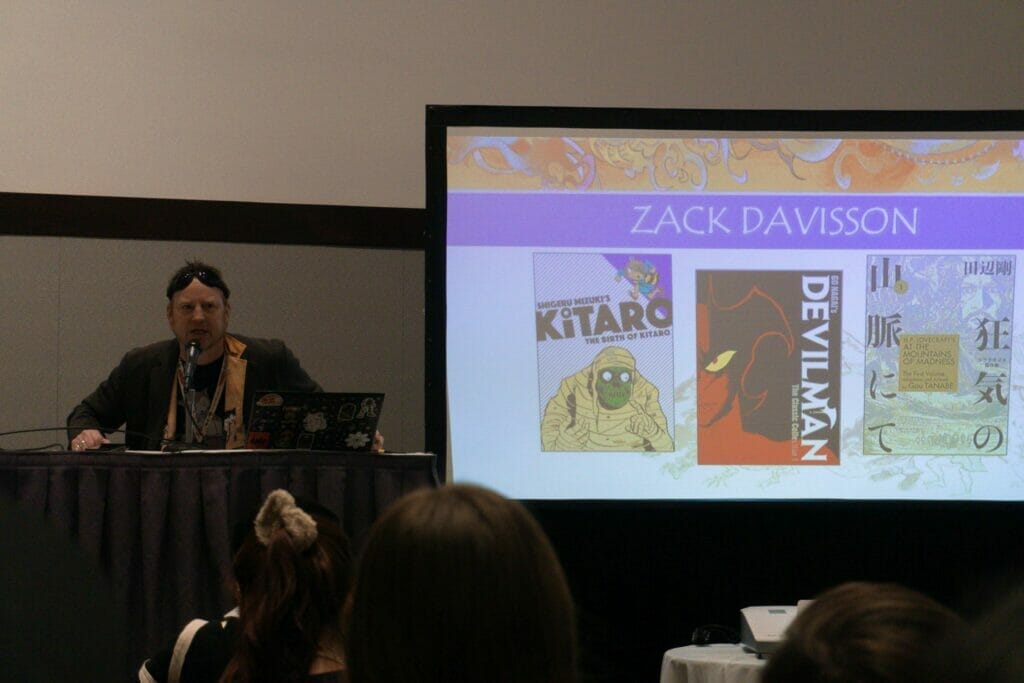
He began the panel by discussing his experiences in moving to Japan. He described the experience as akin to “watching all the Marvel movies and thinking you know everything about living in America,” before making a segue into a few short remarks about Japan’s intimate relationship with the supernatural. Davisson noted that, according to Kitaro creator Shigeru Mizuki, more than 11,000 yokai exist, from the amphibious kappa to the demon bear Onikuma. Some, like Betobeto-san, anthropomorphize the feeling of walking alone at night and though nobody’s, it feels like you’re being followed. Others, like Kejoro, an Edo-era prostitute made entirely of hair, could easily be the stuff of horror stories.
He used these examples as a springboard into a wider discussion on the history of yokai, noting that many of them don’t come from Japan. The nine-tailed kitsune foxes, for example, originated in China, while oni are from the Hindu Rakshasa. That’s to say nothing of sei-yokai, western yokai, that include the figures Dracula and the Loch Ness Monster.

Even from this early point in the panel, it was clear that fans were in for a treat. Davisson showed a natural ease that belied his expertise. His quick wit and eagerness to punch up his delivery kept the capacity crowd seated in rapt attention for the entire panel.
With the explanations out of the way, the panelist entered a broad history of yokai, starting with the nation’s early worship of the primal elements, spiritual energy (ki), and bad energy (Mononoke). This would ultimately evolve into modern Shintoism as the nation came into contact with other Asian nations, and began integrating gods and monsters from foreign nations into their own mythologies. In these early years, yokai were referred to as mononoke, or “things of mystery.” The actual term yokai would come into popular usage until the Meiji era. The term, itself, came about during the Nara period when it was used to describe the purpose of a palace ritual by a royal onmyoji.
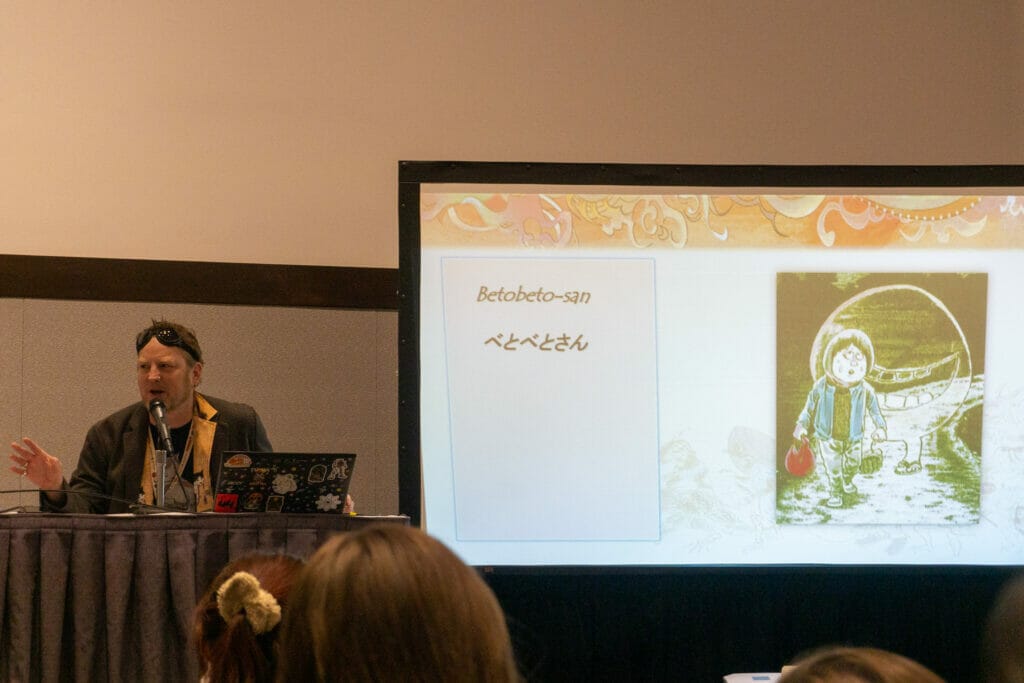
Davisson described the ways that every era added new yokai, as the nation borrowed mythos and deities from cultures that they encountered. The Muromachi period, meanwhile, gave shape to these beings as it introduced the Hyakki Yagyo, or the parade of one hundred oni. In this, the Mononoke of Kyoto would gather and parade through the streets, killing all those who got into their path. Artists gave form to the yokai during the Heian period, as artists began to depict the Hyakki Yagyo to sell paintings.
Meanwhile, the Edo period, which saw the introduction of the printing press, also led to the first yokai encyclopedias, as artist Sawaki Sushi discovered the Muramachi scrolls and began compiling local legends. These proved to be so popular that Sushi was pressured to keep writing, even though he lacked further legends. As such, many yokai, including several of the favorites, were created through the power of pulling ideas out of the air in desperation.
Despite an attempt to purge the nation of superstitions starting in the mid-1800s, yokai managed to endure through word of mouth from those who lived through the earlier eras. Arguably the greatest driver of yokai’s remembrance today, though, was Shigeru Mizuki. Mizuki, who had grown up with an elderly nurse, heard the stories she remembered. When he became an artist, Mizuki referenced these stories of his youth to serve as the basis for his own work, with the most notable being Gegege no Kitaro.
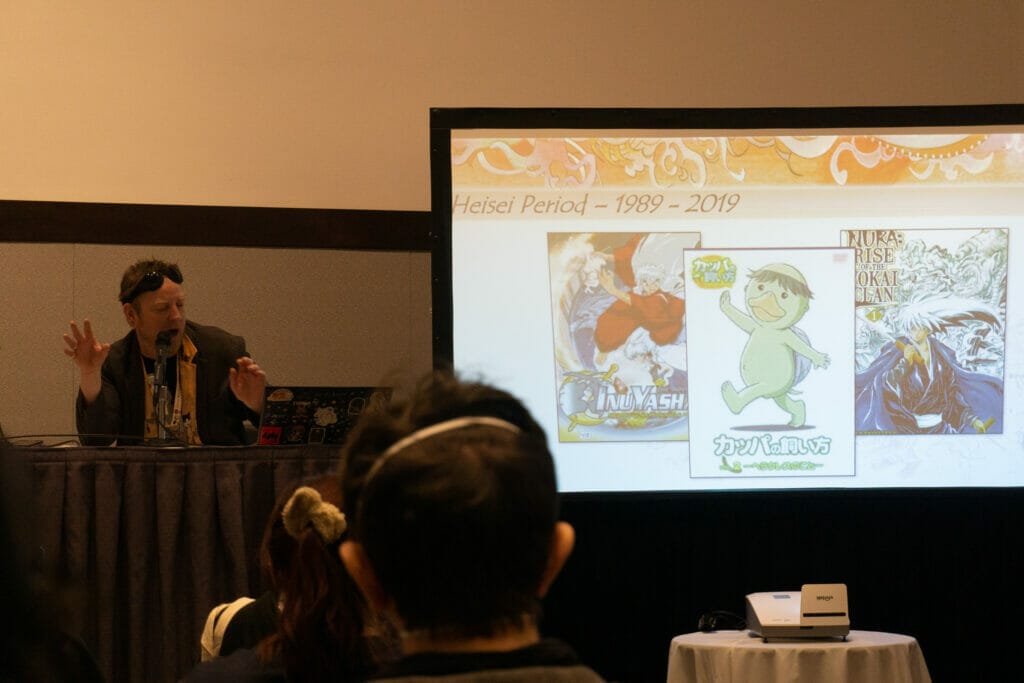
Davisson paused to emphasize in zero uncertain terms that, without Mizuki, the works we enjoy today would not exist. Titles that drew from yokai stories like Naruto, Demon Slayer, and Urusei Yatsura, would not have been created. Likewise, the first modern yokai, Godzilla, would remain little more than a “what if.” Mizuki was, without a doubt, the foundation of everything related to yokai in the modern era.
Through his presentation, Davisson showed a natural, laid-back flow that was just a joy to listen to. His passion for the topic was palpable, as he reveled in talking about minute details about yokai lore, or made jokes about some of the lesser yokai. It was hard not to smile as he pointed to a slide depicting a painting of the Hyakki Yagyo, only to joyfully proclaim, “See that red, fat blobby guy? He’s my favorite.”

To put it bluntly, this panel was nothing short of a delight. To watch a master of his craft hold court for the hundred-plus in attendance, and to see his sheer joy as he focused on a topic that’s led to his own life’s work, was an utter treat. Indeed, it was difficult not to find inspiration in the way that Davisson was able to link the modern day with the annals of history. As the audience filtered out into the waiting halls of the Hynes, it was clear that everyone there had partaken in something genuinely special.


